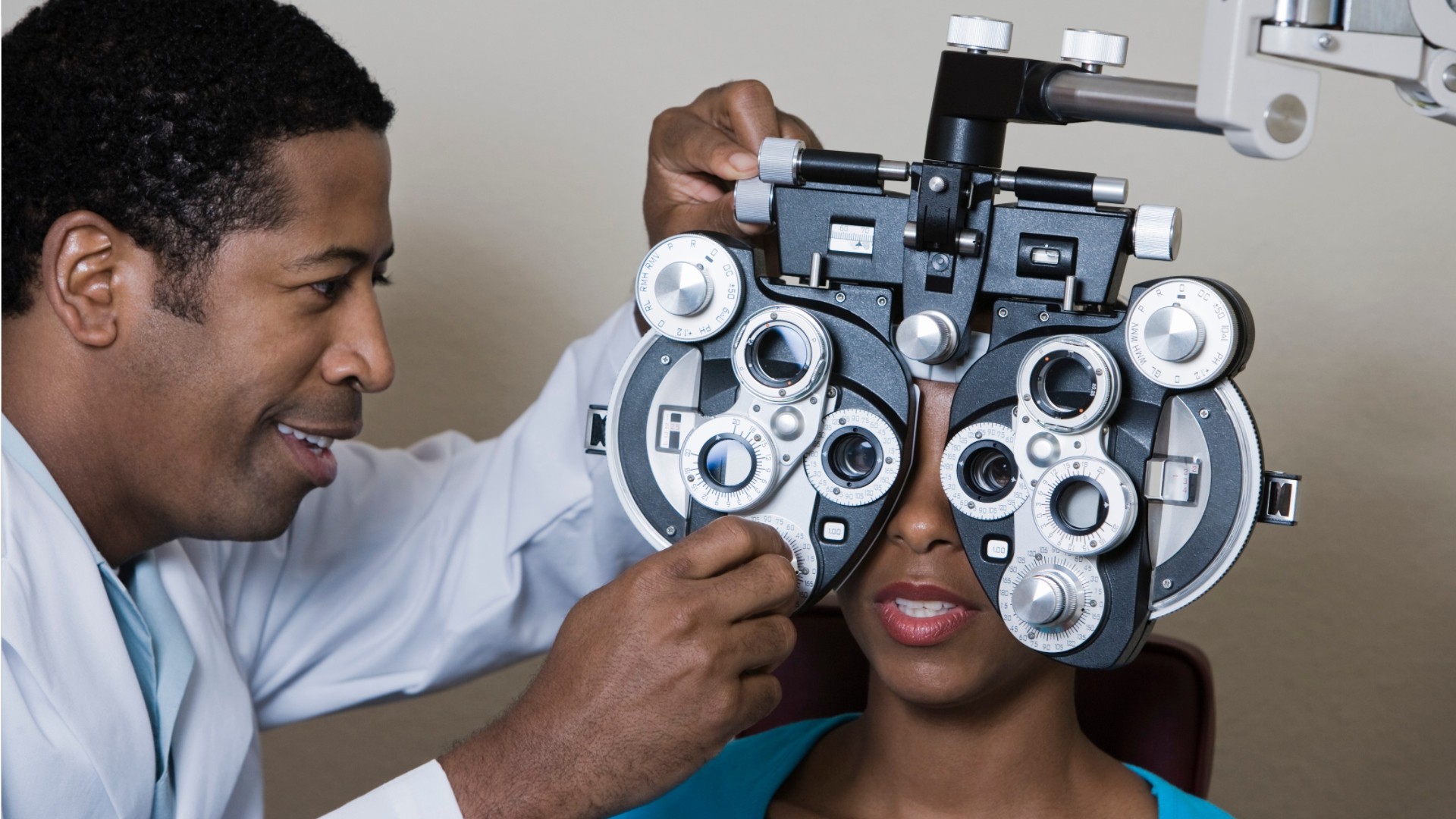Just How an Eye Doctor Can Transform Your Vision Health in Chino
Discovering the most recent Technical Developments in Optometry and What They Mean for Eye Doctors
In the ever-evolving field of optometry, current technical innovations are improving exactly how professionals approach eye care. From the accuracy of Optical Comprehensibility Tomography to the nuanced understandings offered by AI-driven diagnostic tools, these developments are setting new criteria in individual assessment and treatment. Teleoptometry is poised to redefine availability, making sure that know-how transcends geographical restrictions. As these developments penetrate the technique, eye doctors are faced with the difficulty of accepting these devices to improve patient outcomes. Yet, the inquiry remains: how will these technological shifts redefine the duties and duties within the career?
Technologies in Diagnostic Devices
Progressing the field of optometry, developments in analysis tools have changed the way eye care experts evaluate and diagnose eye conditions and visual disabilities. The previous years has witnessed significant technological innovations, making it possible for even more accurate and comprehensive assessments. Optical Coherence Tomography (OCT), as an example, offers high-resolution cross-sectional pictures of the retina, permitting the early detection of conditions such as glaucoma and age-related macular deterioration. This non-invasive imaging technique has actually come to be indispensable in contemporary optometric method.
An additional key technology is the introduction of innovative corneal topography systems, which map the surface curvature of the cornea with precision. These devices are especially useful for fitting contact lenses and diagnosing corneal problems. Digital retinal imaging has actually transformed conventional ophthalmoscopy, providing in-depth, scenic sights of the retina that promote detailed visual assessments.
The development of wavefront aberrometry has actually also been important, making it possible for the analysis of refractive mistakes with unmatched accuracy (Optometrist Chino). This modern technology helps in customizing corrective lenses and enhancing surgical end results for refractive surgical treatments. Jointly, these analysis improvements empower optometrists to provide exceptional individual treatment, making sure very early intervention and customized treatment strategies, ultimately boosting aesthetic wellness outcomes
AI in Person Administration
Building on the structure of sophisticated diagnostic devices, the unification of artificial intelligence (AI) in client monitoring represents a transformative leap for optometry. AI systems are progressively utilized to improve efficiency, precision, and personalization in individual treatment. By assessing huge amounts of information, AI can recognize patterns and forecast prospective ocular conditions, making it possible for eye doctors to customize interventions better. This capacity is critical in handling persistent eye diseases such as glaucoma and diabetic retinopathy, where very early detection and continual monitoring are key.
Additionally, AI-driven platforms help with structured person communications and administrative processes. Automated scheduling, virtual examinations, and customized follow-up strategies not only improve patient contentment yet additionally enhance time administration for experts. These systems can triage individuals based on the seriousness of their problems, making certain that those in essential demand get punctual attention.
Moreover, AI improves decision-making by providing optometrists with evidence-based recommendations and treatment pathways. By incorporating information from electronic health and wellness documents, AI devices offer insights that notify professional choices, lowering the danger of errors and improving client results. As AI continues to advance, its role in individual administration will likely expand, improving the landscape of optometric care.
Advances in Retinal Imaging
In the realm of optometry, retinal imaging has observed amazing technical developments that are boosting diagnostic abilities and client care. Innovations such as Optical Coherence Tomography (OCT) and fundus digital photography have actually revolutionized just how optometrists envision and assess the retina.
Boosted imaging modalities like OCT angiography are additional refining diagnostic accuracy. This non-invasive method maps blood flow in the retina, offering critical understandings right into vascular health without the need for dye injections. Furthermore, adaptive optics technology is being integrated right into retinal imaging systems to deal with ocular aberrations, delivering extraordinary image quality. Such developments help with the recognition of min retinal changes that could represent condition development.
Moreover, innovations in expert system are augmenting retinal imaging by enabling automated evaluation of large datasets. These systems assist eye doctors in identifying patterns indicative of pathology, thus enhancing analysis accuracy and efficiency. Jointly, these innovations are transforming retinal imaging into a keystone of modern-day eye treatment, improving results and increasing therapeutic possibilities.
Teleoptometry's Growing Duty
Teleoptometry is significantly becoming a crucial element visit this website of eye treatment, driven by innovations in data and diagnostic tools. As optometry embraces Get More Information electronic makeover, teleoptometry helps with remote consultations, allowing optometrists to extend their services beyond standard boundaries. This is particularly helpful in country and underserved areas where access to specialized eye treatment is usually limited. By leveraging high-resolution video conferencing and advanced retinal imaging, optometrists can perform comprehensive eye tests from afar, ensuring prompt medical diagnosis and therapy.
The combination of expert system (AI) more enhances teleoptometry, allowing the analysis of visual information and aiding in the detection of eye conditions such as glaucoma and diabetic retinopathy. AI-powered algorithms can swiftly analyze complicated imaging data, providing optometrists with important insights that boost scientific decision-making.
Additionally, teleoptometry sustains continuity of care through smooth integration with electronic health documents (EHRs), enabling optometrists to maintain thorough patient backgrounds. When consulting with different professionals., this ensures that patients obtain customized and consistent treatment even.
Despite these benefits, obstacles continue to be, consisting of making certain information security and taking care of individual assumptions. Teleoptometry represents a significant stride in the direction of more obtainable, efficient, and patient-centered eye care. As modern technology advances, its role is poised to increase additionally.

Future Fads in Eye Treatment
A myriad of cutting-edge patterns is readied to improve the future of eye treatment, driven by technological improvements and the evolving needs of clients. One substantial fad is the combination of expert system (AI) in diagnostics, which guarantees to enhance the accuracy and efficiency of eye evaluations. AI algorithms can examine huge amounts of data from retinal pictures, potentially finding conditions like diabetic person retinopathy and glaucoma earlier than standard techniques.
Moreover, tailored medicine is obtaining grip in click now optometry, with genetic screening notifying tailored treatment plans. This method aims to enhance client results by customizing interventions to private genetic profiles. Wearable technology, such as clever get in touch with lenses, is likewise coming up, supplying real-time surveillance of intraocular pressure or glucose degrees, hence offering constant insights into systemic and eye health.
The fostering of increased fact (AR) and virtual fact (VIRTUAL REALITY) in training and patient education is one more emerging pattern. These technologies use immersive experiences that can improve understanding and skills both for clients and optometrists. As these fads develop, eye doctors must remain abreast of technological improvements to provide innovative care, making certain improved patient end results and contentment in the vibrant landscape of eye treatment.
Final Thought

Collectively, these diagnostic improvements empower eye doctors to provide exceptional patient care, making certain early intervention and customized treatment approaches, inevitably boosting aesthetic wellness end results.

As these innovations continue to develop, optometrists need to adapt and include them into practice, inevitably enhancing operations efficiency and boosting the requirement of eye care supplied to people.